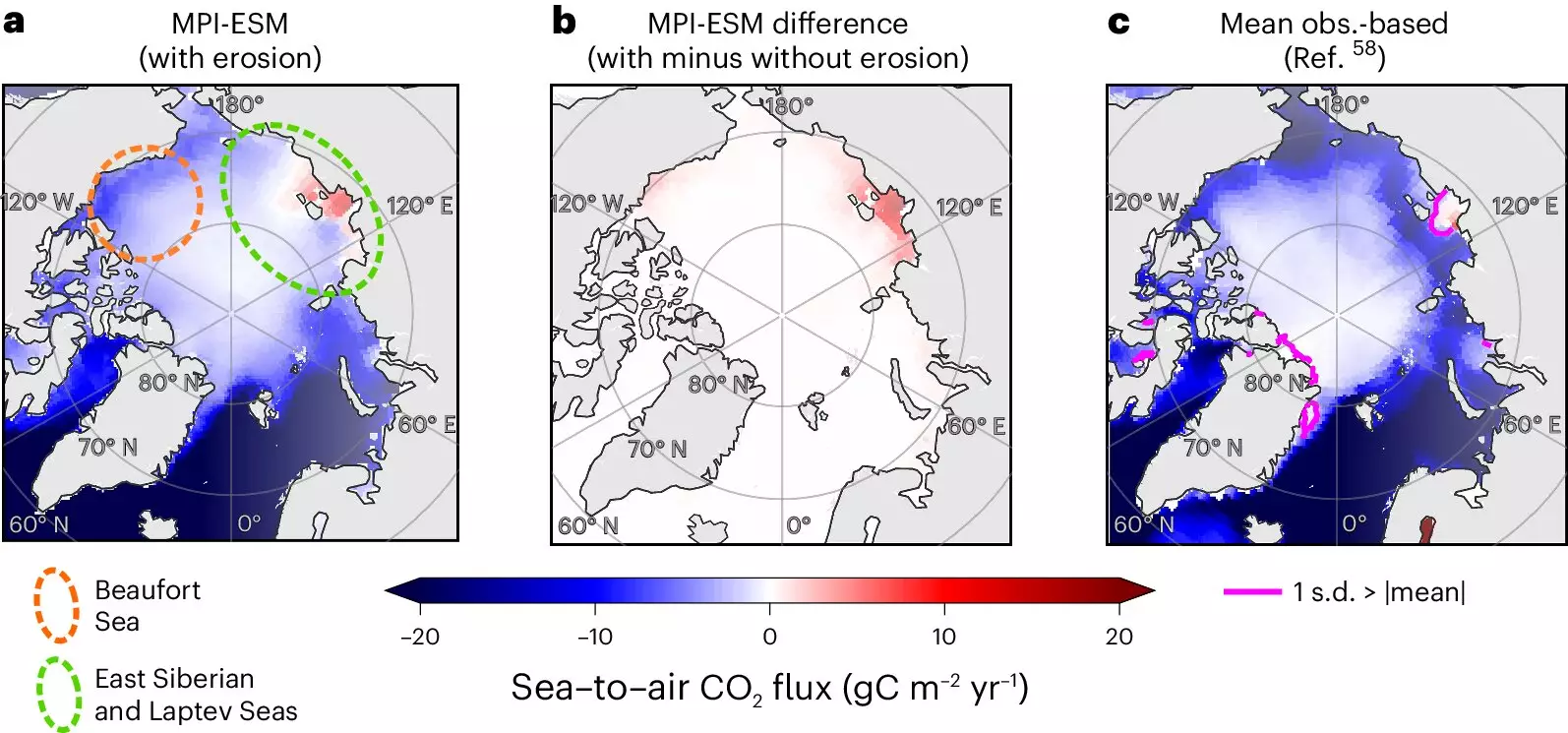Climate change poses a multitude of threats, but perhaps one of the most pressing issues is the alteration of ecosystems that can no longer fulfill their roles as natural buffers for greenhouse gases. A recent study published in *Nature Climate Change* sheds light on the diminishing capacity of the Arctic Ocean to absorb carbon dioxide, primarily due to the accelerated erosion of coastal permafrost. This alarming trend signals not just the direct effects of global warming on the Arctic but also presents a cascading impact on climate systems globally.
Permafrost refers to permanently frozen soil that has historically sequestered vast amounts of carbon, playing a crucial role in regulating the Earth’s carbon cycle. It is estimated that permafrost holds over 1,500 gigatons of carbon, which is significantly more than the amount currently found in the atmosphere. However, rising global temperatures, driven largely by human-induced greenhouse gas emissions, are leading these once-stable ecosystems toward instability. The latest research indicates that permafrost degradation is no longer a distant concern; it is an immediate reality that threatens to release carbon back into the atmosphere, reinforcing a vicious cycle of warming.
David Nielsen, the lead author of the study, indicates that coastal erosion is releasing more carbon than these areas can absorb, marking a crucial turning point in our understanding of the Arctic’s ability to act as a carbon sink. The ramifications of this shift are significant, with projections estimating an increase in atmospheric carbon emissions equivalent to approximately 10% of the total car emissions from Europe in 2021 by the year 2100.
The erosion of coastal permafrost poses a dual threat: not only does it release stored carbon, but it also contributes to an environment more susceptible to further erosion and subsequent carbon release. As the summer months lengthen and soil thaws, coastal areas are left exposed to the relentless assault of waves and storms. Nielsen’s research highlights specific “hot spots” of erosion in places like Alaska and Siberia, which showcase this phenomenon’s local impact, including ocean acidification and detrimental effects on marine and coastal ecosystems.
Moreover, these changes do not occur in isolation; the feedback loop created by this erosion is alarming. For every degree Celsius increase in global temperatures, the degradation of permafrost could lead to an additional 1.1 to 2.2 million tons of atmospheric CO2 per year. Thus, as we grapple with the immediate consequences of climate change, we must also consider how these changes are creating an accelerating cycle that can exponentially increase the problem.
The consequences of permafrost erosion extend well beyond the mere numbers of carbon released into the atmosphere. Local coastal communities are already experiencing the adverse effects of these environmental changes, with regions like Shishmaref in Alaska facing existential threats due to coastal erosion, rising sea levels, and increasingly intense weather events. These communities are being forced to consider relocation as their homes become increasingly uninhabitable, resulting not only in the loss of physical space but also of cultural heritage and history.
As permafrost melts, it may also expose ancient remains and sites of archaeological significance, leading to a tragic loss of cultural knowledge and identity for indigenous populations. Thus, the implications of climate change are inexorably intertwined with social, cultural, and anthropological concerns, demanding a comprehensive approach to climate action.
Although this study presents critical findings regarding the reduced efficacy of the Arctic Ocean as a carbon sink, the research community acknowledges that many questions remain unanswered. Understanding the precise mechanisms of permafrost erosion and its broader climate implications requires further in-depth research and advanced modeling. While the carbon emissions from permafrost erosion may currently seem small—representing only about 0.1% of total human emissions—the reality is that we are witnessing the beginning of a potentially catastrophic feedback loop.
As the study underlines, the interplay between human activities and climate change is a driving force that cannot be ignored. Urgent efforts to minimize fossil fuel consumption and mitigate climate change are not just essential for reducing human emissions; they are also crucial in preventing the unraveling of our planet’s complex carbon systems which, if left unchecked, could unleash vast amounts of carbon that have been securely locked away for millennia.
The findings underscore the dire need for a holistic understanding of climatic systems and their interconnections. The Arctic may be physically distant from many populations, but the consequences of its climatic changes echo throughout the globe—an undeniable reminder that our planet’s well-being is interconnected and profoundly fragile.

